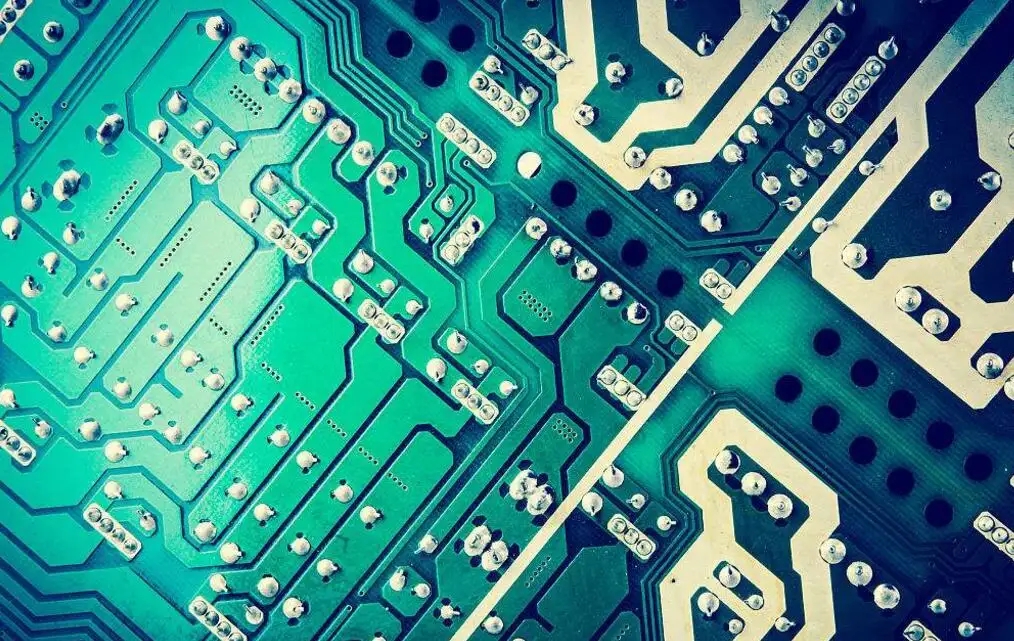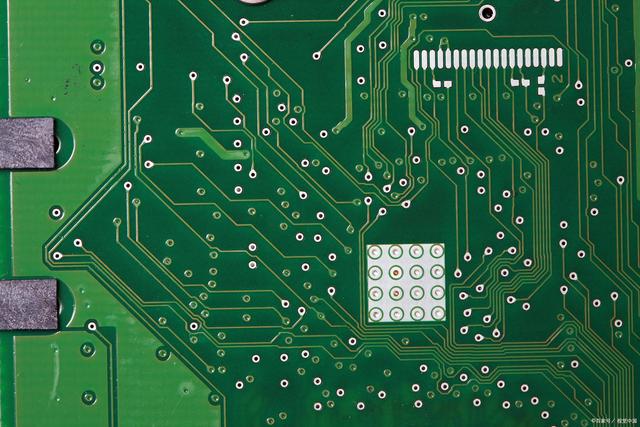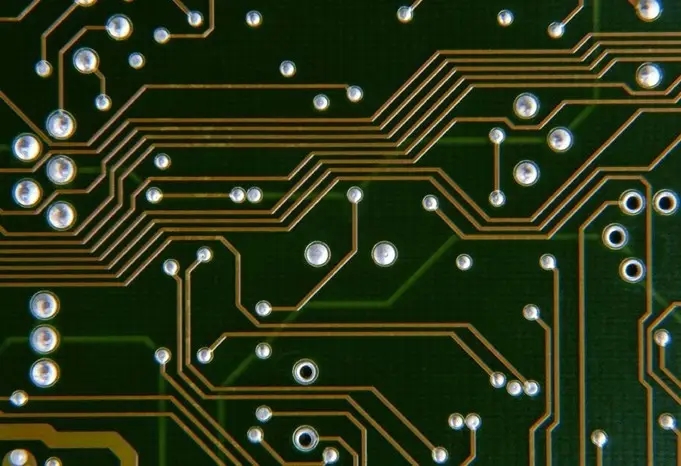
PCB process electroplating process learning data
Circuit board manufacturers and circuit board designers explain electroplating process learning data for you
1、 Classification of electroplating process:
Acid bright copper electroplating nickel/gold electroplating tin
2、 PCB process flow:
Pickling → full plate copper electroplating → pattern transfer → acid degreasing → secondary countercurrent rinsing → micro etching → secondary → pickling → tin plating → secondary countercurrent rinsing countercurrent rinsing → pickling → pattern copper electroplating → secondary countercurrent rinsing → nickel plating → secondary water washing → citric acid leaching → gold plating → recycling → 2-3 pure water washing → drying
3、 Process description:
(1) Pickling
① Function and purpose;
② The pickling time should not be too long to prevent oxidation of the board surface; After a period of use, if the acid solution is turbid or the copper content is too high, it should be replaced in time to prevent pollution to the surface of the electroplating copper cylinder and plate;
③ C. P grade sulfuric acid shall be used here;
(2) Full plate electroplating of copper: also called copper, plate electroplating
① Function and purpose: Protect the thin chemical copper just deposited, prevent it from being eroded by acid after oxidation, and add it to a certain extent by electroplating
② Relevant process parameters of copper electroplating on the whole plate: the main components of the bath solution are copper sulfate and sulfuric acid, and the formula of high acid and low copper is adopted to ensure the uniformity of the thickness distribution of the plate surface and the deep plating capacity for deep holes and small holes during electroplating; The content of sulfuric acid is mostly 180g/L, and most of it reaches 240g/L; The content of copper sulfate is generally about 75g/L. In addition, a small amount of chloride ion is added to the bath solution, which can be used as an auxiliary gloss agent and a copper polish agent to play a gloss effect together; The addition amount or cylinder opening amount of copper polish is generally 3-5 ml/L. The addition of copper polish is generally supplemented according to the method of kiloampere hour or according to the actual production board effect; The current of full plate electroplating is generally calculated by multiplying 2 A/square decimeter by the electroplating area on the plate. For full plate electroplating, the plate length dm × Board width dm × two × 2A/ DM2; The temperature of the copper cylinder is maintained at room temperature. Generally, the temperature does not exceed 32 ° C, and most of the temperature is controlled at 22 ° C. Therefore, it is recommended to install a cooling temperature control system for the copper cylinder because of the high temperature in summer;

③ Process maintenance: timely supplement copper polish according to kiloampere hours every day, and supplement according to 100-150ml/KAH; Check whether the filter pump works normally and whether there is air leakage; Wipe the cathode conducting rod with a clean wet rag every 2-3 hours; Regularly analyze the content of copper sulfate (once/week), sulfuric acid (once/week) and chloride ion (twice/week) in copper cylinder every week, adjust the content of polish through Hall cell test, and timely supplement relevant raw materials; Clean the anode conducting rod and electric joints at both ends of the tank every week, supplement the anode copper ball in the titanium basket in time, and use the low current of 0. 2—0。 5ASD electrolysis for 6-8 hours; Check whether the titanium basket bag of anode is damaged every month, and replace the damaged one in time; Check whether there is anode mud at the bottom of anode titanium basket, and clean it in time if there is; The carbon core is used for continuous filtration for 6-8 hours, and low current electrolysis is used for impurity removal; Determine whether to require major treatment (activated carbon powder) according to the pollution condition of the tank liquid every half a year or so; Replace the filter element of the filter pump every two weeks;]
④ Large processing program: A Take out the anode, pour out the anode, clean the anode film on the anode surface, and then put it in the barrel for packaging copper anode. Roughen the copper corner surface to uniform pink with micro etchant. After washing and flushing, put it into the titanium basket, and then put it into the acid tank for standby B Immerse the anode titanium basket and anode bag in 10% alkali solution for 6-8 hours, wash and rinse them dry, then soak them in 5% dilute sulfuric acid, wash and rinse them dry, and then use them for standby; C. Transfer the tank solution to the standby tank, add 1-3 ml/L of 30% hydrogen peroxide, start heating, turn on air stirring when the temperature reaches about 65 ℃, and stir with insulated air for 2-4 hours; D. Turn off the air agitation, slowly dissolve the activated carbon powder into the bath solution at 3-5 g/l. After the solution is completely dissolved, turn on the air agitation, and keep the temperature for 2-4 hours; E. Turn off the air agitation, heat up, and let the activated carbon powder slowly settle to the bottom of the tank; F. When the temperature drops to about 40 ℃, use 10um PP filter element and filter aid powder to filter the tank liquid into the clean working tank, turn on air agitation, put the anode in, hang it into the electrolytic plate, and press 0. 2-0。 5ASD current density low current electrolysis for 6-8 hours, G After chemical analysis, adjust the content of sulfuric acid, copper sulfate and chloride ion in the tank to the normal operating range; Supplement polish according to Hall cell test results; H. After the color of the electrolytic plate is uniform, stop electrolysis, and then press 1-1. The current density of 5ASD is treated with electrolytic green film for 1-2 hours, and a layer of black phosphorus film with uniform, dense and good adhesion can be formed on the anode; 1. Trial plating OK;
⑤ The anode copper ball contains 0. 3—0。 6% phosphorus, the main purpose is to reduce the anodic dissolution efficiency and reduce the production of copper powder;
⑥ When replenishing drugs, such as adding large amounts of copper sulfate and sulfuric acid; Low current electrolysis shall be conducted after adding; Attention shall be paid to safety when adding sulfuric acid. When adding large amount of sulfuric acid (more than 10 liters), it shall be added slowly in several times; Otherwise, the temperature of the bath solution will be too high, the decomposition of the polish will be accelerated, and the bath solution will be polluted;
⑦ Special attention shall be paid to the addition of chloride ion, because the chloride ion content is extremely low (30-90ppm), and it must be accurately weighed by a measuring cylinder or measuring cup before adding; 1ml hydrochloric acid contains about 385ppm chloride ion,
⑧ Calculation formula for drug addition: copper sulfate (unit: kg)=(75-X) × Tank volume (L)/1000 sulfuric acid (unit: L)=(10% - X) g/L × Tank volume (liter) or (unit: liter)=(180-X) g/L × Tank volume (L)/1840 hydrochloric acid (unit: ml)=(60-X) ppm × Tank volume (L)/385
(3) Acid degreasing
① Purpose and function
② Remember that acid degreaser is used here. Why not use alkaline degreaser and alkaline degreaser has better degreasing effect than acid degreaser? Because the graphic ink is not alkali resistant, it will damage the graphic circuit, so the graphic can only use acid degreaser before electroplating.
③ During production, it is only necessary to control the concentration and time of the degreaser. The concentration of the degreaser is about 10%, and the time is guaranteed to be 6 minutes. A little longer time will not have adverse effects; The use and replacement of tank liquid is also based on 15 m2/L working liquid, and the supplement is based on 100 m2 0. 5—0。 8L;
(4) Microetching:
① Purpose and function: Clean and roughen the copper surface of the circuit to ensure the binding force between the pattern electroplating copper and the primary copper
② Sodium persulfate is mostly used as the micro etchant. The roughening rate is stable and uniform, and the water washability is good. The concentration of sodium persulfate is generally controlled at about 60g/L, and the time is controlled at about 20 seconds. The dosage of drugs is 3-4 kg per 100 square meters; Copper content shall be controlled below 20g/L; Other maintenance and cylinder replacement are the same as copper micro etching.
(5) Pickling
① Function and purpose;
② The pickling time should not be too long to prevent oxidation of the board surface; After a period of use, if the acid solution is turbid or the copper content is too high, it should be replaced in time to prevent pollution to the surface of the electroplating copper cylinder and plate;
③ C. P grade sulfuric acid shall be used here;
(6) Pattern copper plating: also called secondary copper, copper plating for circuit
① Purpose and function: In order to meet the rated current load of each line, each line and hole copper needs to reach a certain thickness. The purpose of line copper plating is to thicken the hole copper and line copper to a certain degree in time;
② Other items are the same as full plate electroplating
7) Electrotinning
① Purpose and function: Pure tin is mainly used as the metal anti-corrosive layer to protect the circuit etching;
② The bath solution is mainly composed of stannous sulfate, sulfuric acid and additives; The stannous sulfate content shall be controlled at about 35g/L, and the sulfuric acid content shall be controlled at about 10%; Tin plating additives are generally added according to the method of kiloampere hours or according to the actual production board effect; The current of tin electroplating is generally calculated as 1. 5 A/square decimeter times the electroplating area on the plate; The temperature of the tin cylinder is maintained at room temperature. Generally, the temperature does not exceed 30 degrees, and most of it is controlled at 22 degrees. Therefore, it is recommended to install a cooling temperature control system for the tin cylinder in summer because of the high temperature;
③ Process maintenance: timely supplement tin plating additives according to kiloampere hours every day; Check whether the filter pump works normally and whether there is air leakage; Wipe the cathode conducting rod with a clean wet rag every 2-3 hours; Regularly analyze stannous sulfate (once/week) and sulfuric acid (once/week) in tin cylinder every week, adjust tin plating additive content through Hall cell test, and timely supplement relevant raw materials; Clean the anode conducting rod and electric joints at both ends of the tank every week; Use low current 0 every week. 2—0。 5ASD electrolysis for 6-8 hours; Check whether the anode bag is damaged every month, and replace the damaged bag in time; Check whether there is anode mud at the bottom of the anode bag, and clean it in time if there is; Continuous filtering with carbon core for 6-8 hours every month, and low current electrolysis for impurity removal; Determine whether to require major treatment (activated carbon powder) according to the pollution condition of the tank liquid every half a year or so; Replace the filter element of the filter pump every two weeks; Large processing program: A Take out the anode, take down the anode bag, clean the anode surface with a copper brush, wash it dry, put it into the anode bag, and put it into the acid tank for standby B Immerse the anode bag in 10% alkali solution for 6-8 hours, wash and rinse it dry, then soak it in 5% dilute sulfuric acid, wash and rinse it dry, and then use it for standby; C. Transfer the tank solution to the standby tank, slowly dissolve the activated carbon powder into the tank solution at 3-5 g/l. After the solution is completely dissolved, adsorb it for 4-6 hours, filter the tank solution with 10 um PP filter element and filter aid powder to the cleaned working tank, place the anode, hang it into the electrolytic plate, and press 0. 2-0。 5ASD current density low current electrolysis for 6-8 hours, D After chemical analysis, adjust the content of sulfuric acid and stannous sulfate in the tank to the normal operating range; Add tin plating additives according to the results of Hall cell test; E. Stop electrolysis when the color of the electrolytic plate is uniform; F. Trial plating OK;
④ When replenishing drugs, such as stannous sulfate and sulfuric acid, when the added amount is large; Low current electrolysis shall be conducted after adding; Attention shall be paid to safety when adding sulfuric acid. When adding large amount of sulfuric acid (more than 10 liters), it shall be added slowly in several times; Otherwise, the temperature of the bath solution will be too high, and the stannous oxide will be oxidized, speeding up the aging of the bath solution;
⑤ Calculation formula for drug addition: stannous sulfate (unit: kg)=(40-X) × Tank volume (L)/1000 sulfuric acid (unit: L)=(10% - X) g/L × Tank volume (liter) or (unit: liter)=(180-X) g/L × Tank volume (L)/1840
The whole body is the circuit board manufacturer and circuit board designer who explain the electroplating process and learn the data.







